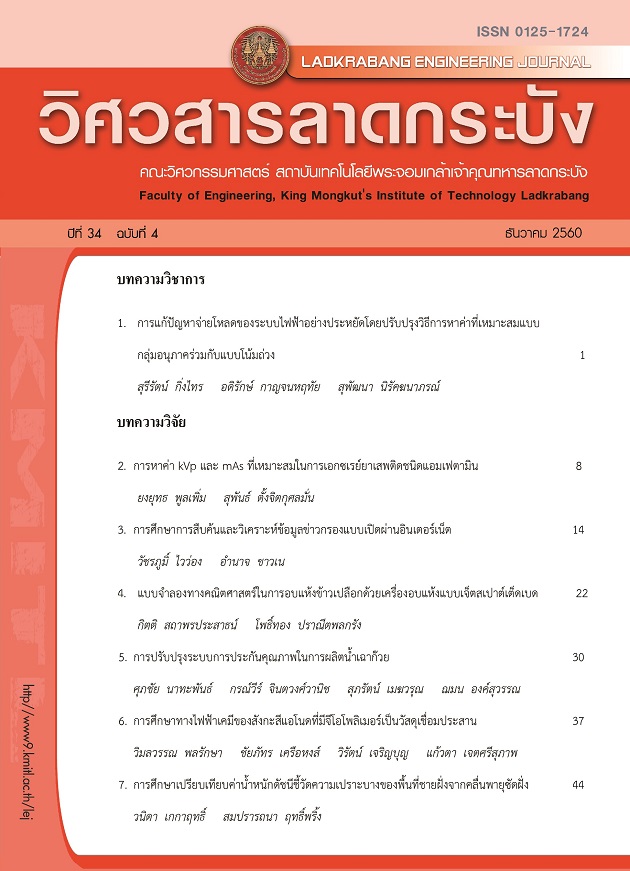A Comparative Study of Vulnerability Weighting Index of Coastal Area from Storm Surges
Keywords:
Weighting, Vulnerability, Prachuap Khiri Khan coastal area, Storm surgesAbstract
This is the studying of Vulnerability on Prachuap Khiri Khan coastal area which is affected by storm surges. By using the Field survey and secondary data, the study defines seven factors of coastal vulnerability index (CVI). Including, type of beach, beach slope, elevation, coastal structure, wave height (by the storm surge), population density, and land use. This study focused on the assessment of the factors that affect the coastal vulnerability from storm surges. The Multi-Criteria Analysis (MCA) Questionnaires was applied as a tool for this study and there are 3 groups of people answered these questionnaires, which are 1.The Coastal Engineering Specialists 2.The Government Officers 3.Local people. The results show that the most affected factors are the Socioeconomic factors; i.e. Population density (17.72%), land use (16.38%). The second are the Disaster factors; i.e. Wave heights of storm surge (15.65%) and the last one are the Physical factors; i.e. coastal structures (15.09%), beach slope (11.19%), and type of beach (10.95%).
References
K. Wanida and R. Sompratana, “Vulnerability assessment of affected coastal area from storm surges”, The 22nd National Convention on Civil Engineering, Jul., 2017
A.G. Mendoza, P. Macoun with R. Prabhu, and H. Hartanto, “Guidelines for Applying Multi-Criteria Analysis to the Assessment of Criteria”, 9 The Criteria & Indicators Toolbox Serie, pp.22-27,1999
R. Payom , L. Kanungnit and C. Wisut, “Integrated Knowledge of Shore Protection Projects” The 10th PSU-UNS International Conference on Engineering and Technology, May., 2008
G. Kattalee and N. Kanchana, “Geo-Information Technology for Coastal Vulnerability Assessment Samut Songkram Province”, Thai science and technology journal, vol 22, No 6, pp.775-788, 2014
Downloads
Published
How to Cite
Issue
Section
License
The published articles are copyrighted by the School of Engineering, King Mongkut's Institute of Technology Ladkrabang.
The statements contained in each article in this academic journal are the personal opinions of each author and are not related to King Mongkut's Institute of Technology Ladkrabang and other faculty members in the institute.
Responsibility for all elements of each article belongs to each author; If there are any mistakes, each author is solely responsible for his own articles.






